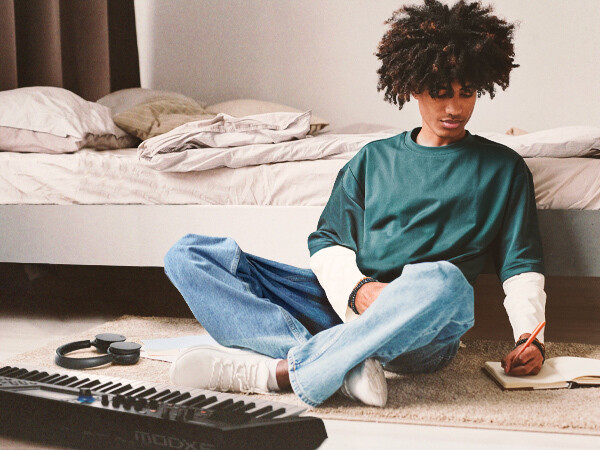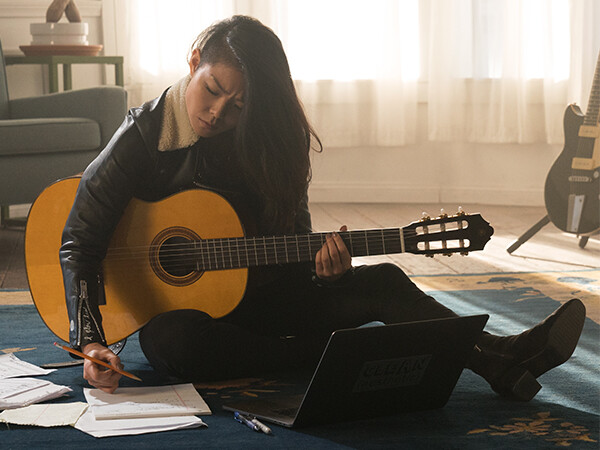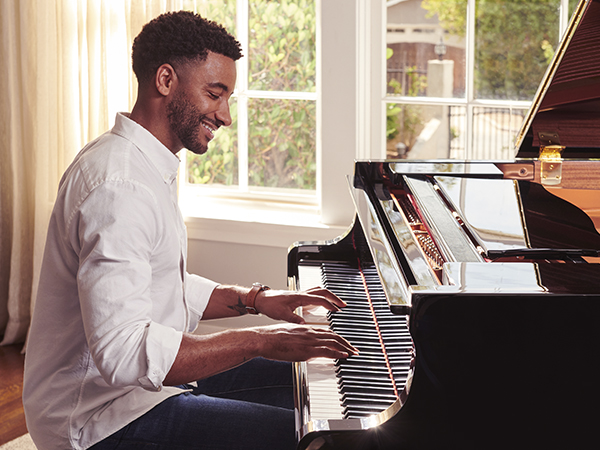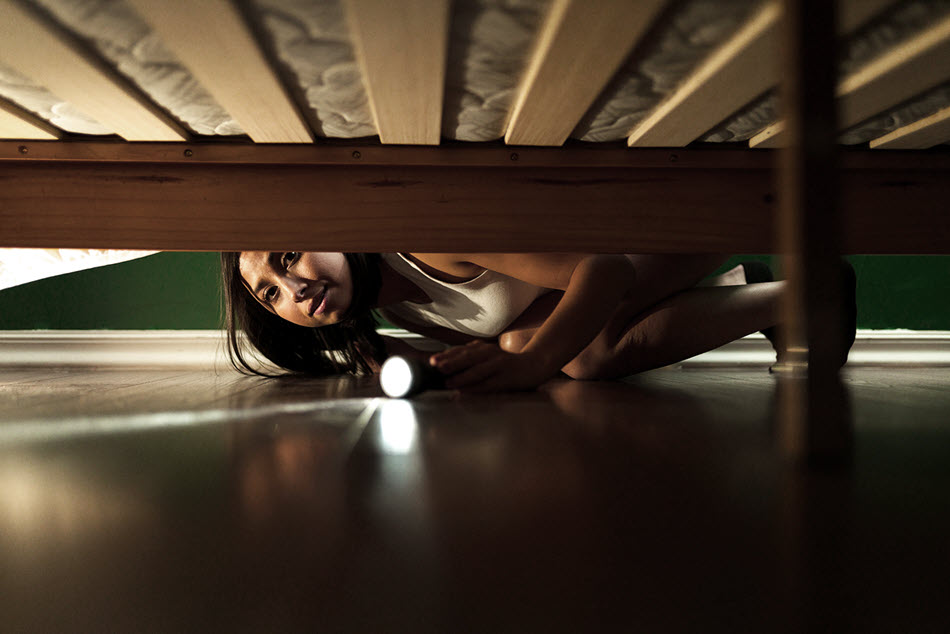Tagged Under:
Yamaha at The Met
Interactive learning with unique instruments.
New York’s world-famous Metropolitan Museum of Art (The Met) recently added an interactive learning space for children at their 81st Street Studio facility, with Yamaha playing a major role.
The musical station at the space was conceived and designed by the Yamaha Design Laboratory, using a variety of materials to introduce children to unique sound experiences and demonstrate how different materials influence sound. The first-of-their-kind instruments include standing guitars, a bird chime, a castanet wall, a marimba window, sound surfboards and an 11-note bellows pipe organ.
Ready to learn more? Read on …
Standing String

This consists of two guitars, one large and one small, each with a single string on a tree trunk-like body rising vertically. The position of the finger on the string alters the string’s length, while pressing the pedal changes the tightness of the string, both resulting in a change in pitch. Using their whole body, the player can experience and understand the principles of one of the most basic musical instruments: a string, which produces sound by vibration.
Woodpecker Chime
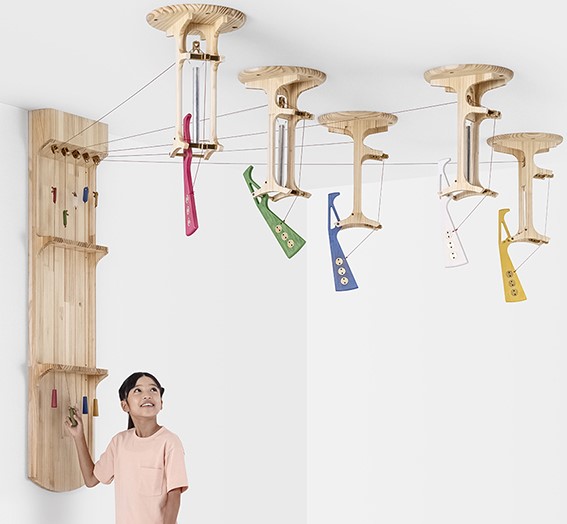
By pulling a string and releasing it, a hammer strikes a chime, imitating the way a woodpecker taps on wood. An array of wooden birds are scattered across the ceiling, with each playing a different scale, allowing the child to enjoy the various sounds and movements of the birds spread throughout the space as if they were in a forest.
Wall Castanet

This large interactive sound-making wall is filled with dozens of castanets, designed to spark children’s curiosity. The sound varies depending on the type of wood used for each castanet, as does the pitch, which changes depending on the size of the ring cut out from the wall.
Marimba Woods
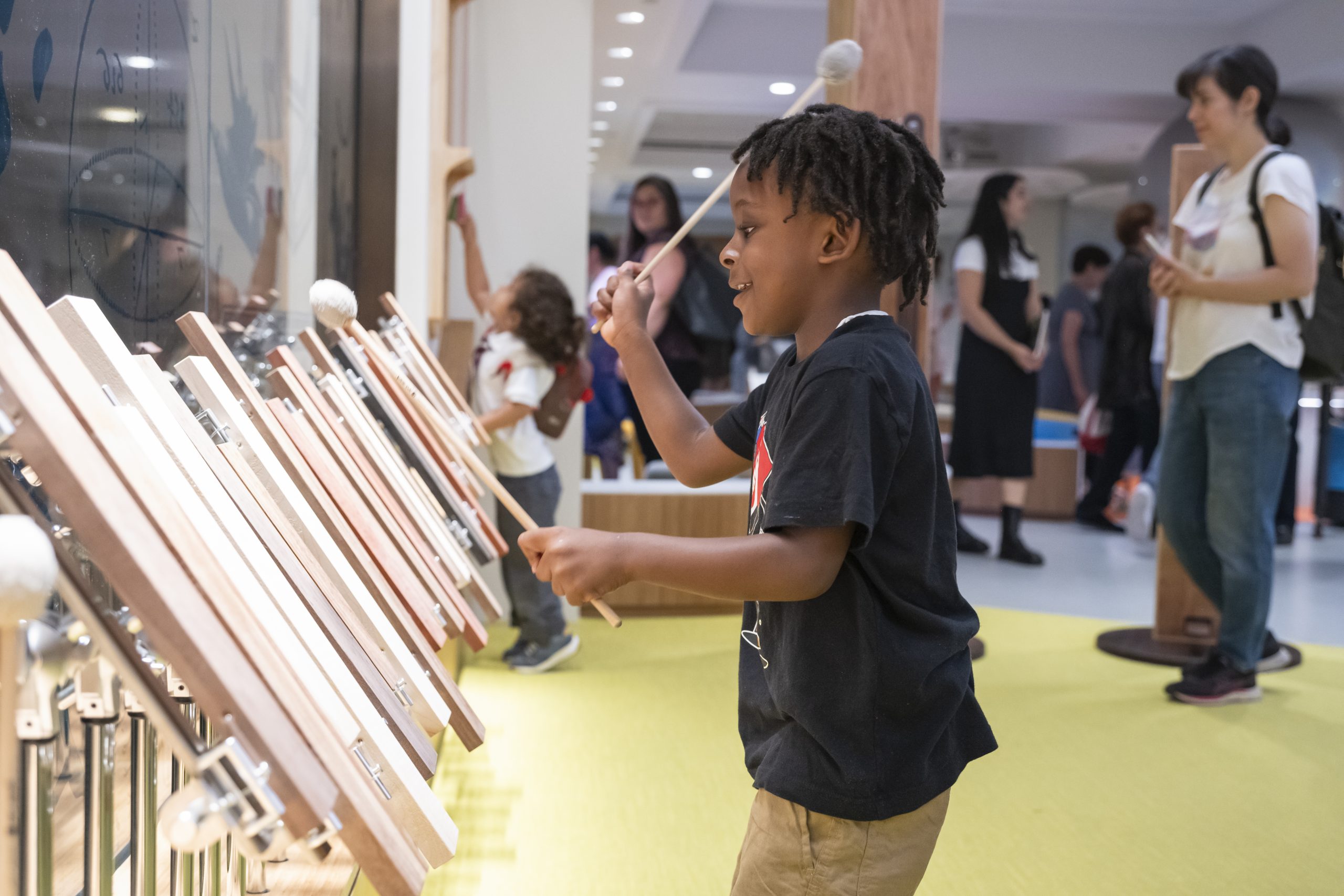
Photo by Paula Lobo, courtesy of The Met.
This is a collection of sound boards made of various types of wood, lined up against a glass window. Each board is tuned to make the correct scale, but when the child taps it, they will notice that, depending on the wood type, the sound characteristics and the relationship between their size (length) and scale vary. This shows that each wood type has different and unique properties, such as hardness and density.
Sound Surfboard
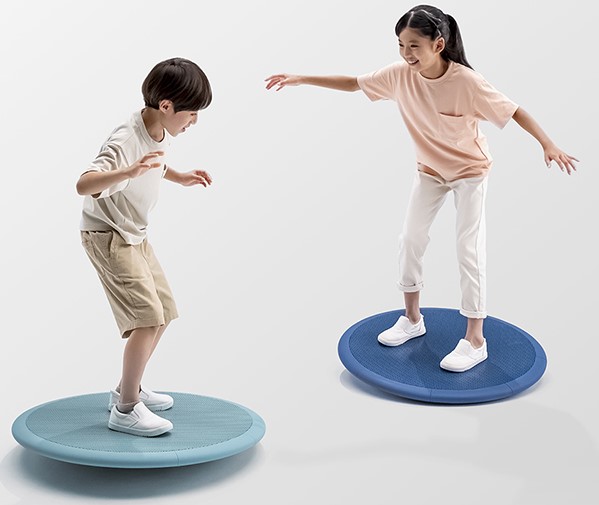
These balance board-style toys play the sound of waves when ridden. Small steel balls inside move and rub against the form, producing white noise-like sounds. From strong waves to quiet ripples, the sound changes depending on how the child moves their body, allowing them to naturally enjoy making sound through play.
Bellows Pipe Organ
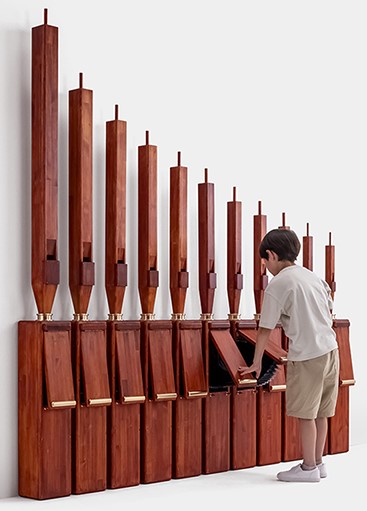
The first musical instrument crafted by Yamaha company founder Torakusu Yamaha, way back in 1887, was a reed organ. Similarly, the pipe-like organ created for The Met’s interactive learning space makes sound by pushing air through orderly arranged tubes. Air is pumped out by bellows on the base, and sound is produced from the resulting vibration of air coming from the tubes. As they play, the child learns how the pitch changes depending on the length of the tubes and will experience the overlap of notes played by pumping air into multiple tubes simultaneously. This allows the player to better understand the sound-making principles of a pipe similar to a recorder, and to appreciate the sound of multi-note chords.
The Heart and Soul of Yamaha
“Music education is at the heart and soul of Yamaha,” says Kip Washio, design R&D department manager, Yamaha Corporation of America. “With this musical learning station, we aimed to create out-of-the box musical instruments — ones that are experiential in nature and distinct from traditional instruments — to fuel children’s curiosity for exploration. This is a first for Yamaha to create inspiring and interactive musical instruments as long-term installations.”
With each of the instruments on display, children will uncover the principles of music-making. This includes being able to use their whole bodies to generate sound, emphasizing a tactile experience, in addition to the marimba boards along the windows allowing multiple children to simultaneously explore the diverse tonal qualities of various wood types and materials.
“The six featured pieces are designed to allow people to experience the joy and wonder of creating different sounds using a diverse range of materials,” adds Mr. Manabu Kawada, senior general manager, Yamaha Design Laboratory. “Visitors can immerse themselves in the sounds of the natural world and everyday life as they strike, pluck, and even ride on these creations. Because they are installed in a learning center in a world-renowned museum where curious children are free to roam, we dedicated ourselves to offering people the chance to experience real sound phenomena firsthand. In an age of convenience, we wanted children to discover ways of enjoying themselves with sound by touching things with their hands, listening carefully to the sounds created, and experimenting in their way.”
About the Yamaha Design Laboratory
Established in 1963, the Yamaha Design Laboratory is the company’s in-house design division, overseeing a wide variety of products, ranging from acoustic and digital musical instruments to audio equipment, furniture, golf products and more.
Throughout the years, Yamaha has accumulated numerous awards and recognition for products developed by the laboratory, including the flagship wireless YH-L700A headphones and the saxophone-like Venova casual wind instrument created for beginners, as well as the YDS-150 digital saxophone and the line of THR-II desktop guitar amplifiers. The laboratory also created the experimental “wall piano” that was one of the highlights of the 2022 NAMM show.
About the 81st Street Studio
The 81st Street Studio is a renovated 3,500-square-foot science and art play space in the Ruth and Harold D. Uris Center for Education at The Met. Created for children ages 3 to 11, the Studio offers dynamic digital and analog experiences that stimulate and encourage making, investigation, critical thinking, problem-solving and appreciation for the diverse dimensions of materials and their properties.











